Merida has launched a pair of new bikes – the enduro-focused One Sixty and the trail-ready One Forty.
These two bikes are said to represent the most adjustable and radically shaped mountain bikes Merida has ever built. They boast geometry straight from the long, low, slack playbook, suspension designed to tick all the boxes and a range of neat finishing touches aimed at making the bikes as adaptable and easy to live with as possible.
The One Sixty and the One Forty share the same alloy or carbon frames, with differences in shock strokes altering the travel, while build kits define the ride characteristics of the two bikes.
The Merida One Sixty is a full-bore enduro bike, with either 162mm (29in) or 171mm (mullet) rear-wheel travel, paired with 38mm-stanchion 170mm forks. Extra-short, Short and Medium bikes will be shipped as a mullet, while Long and Extra-long bikes will be 29ers on the shop floor.
The Merida One Forty is a modern trail bike, featuring 143mm of travel at the back (153mm if run as a mullet), with 150mm 35- or 36mm-stanchion forks plugged into the head tube. Bikes will come as standard as 29ers.
Merida has developed a sizing system, named Agilometer, for the bikes, pairing short seat tubes and stack heights with long reaches, enabling you to pick a long and stable bike without compromising dropper-post drop, or pick a shorter, more agile bike if you wish.
This is paired with Merida's own adjustable dropper post, with up to 230mm of adjustable travel.

Both bikes use Merida's new FAST suspension linkage, with size-specific kinematics to better suit riders of different heights.
Merida One Sixty and One Forty shared-frame details
The One Sixty and One Forty share the same frames, with the One Sixty getting a longer 65mm-stroke shock, while the One Forty gets a 57.5mm-stroke shock. This is then paired with longer, or shorter forks.
Merida uses its CF4 carbon and LITE aluminium for both frames. They share the same geometry and suspension feel, but the carbon model has a little more flexibility in its offerings, as well as lighter weight.
Carbon models benefit from internal frame storage, in the form of a long sleeve that slots into the down tube via the 'Merida Service Port', also used to access the under-BB internal cable routing. There's also a pair of bosses near the front shock mount for additional storage.
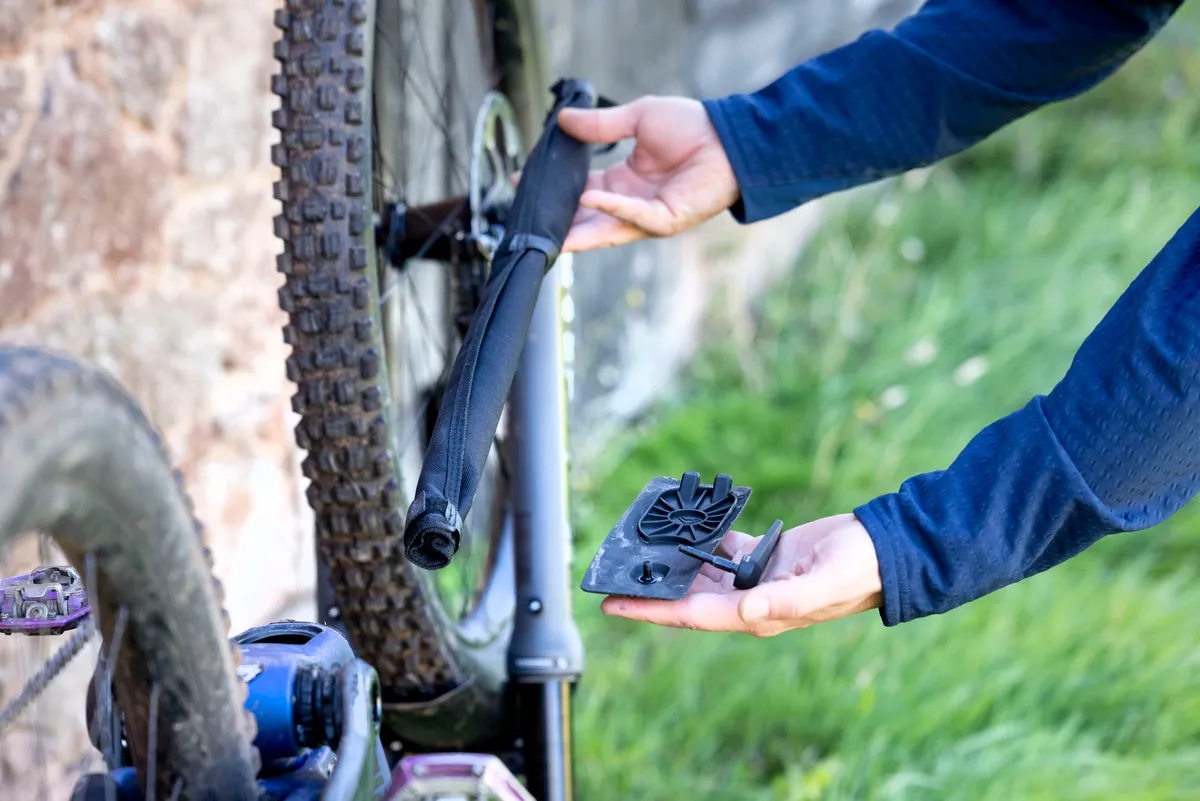
The alloy bikes' access to the internal routing is in the same place, but a smaller hole is used, and no internal storage is offered.
All frames use the Wireport headset, whereby cables enter the frame under the stem, reducing the number of holes needed in the frame's tubes. Carbon frames benefit from full internally sleeved routing, while alloy bikes' internal hoses and cables are shrouded in foam to prevent rattles.
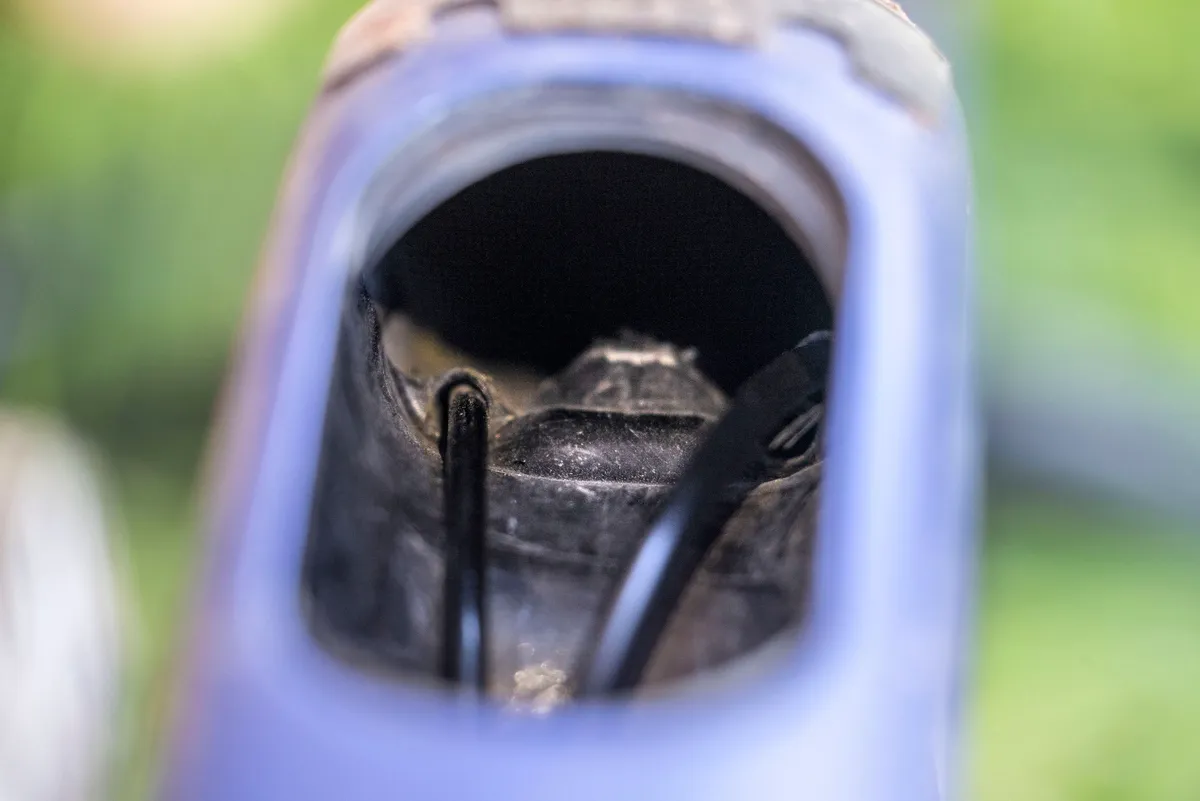
Cables and hoses going towards the rear axle are routed through the main rear pivot. In doing so, Merida has minimised the amount of cable growth experienced as the bike moves through its travel. This improves mechanical gear reliability and reduces wear and interference in the suspension.
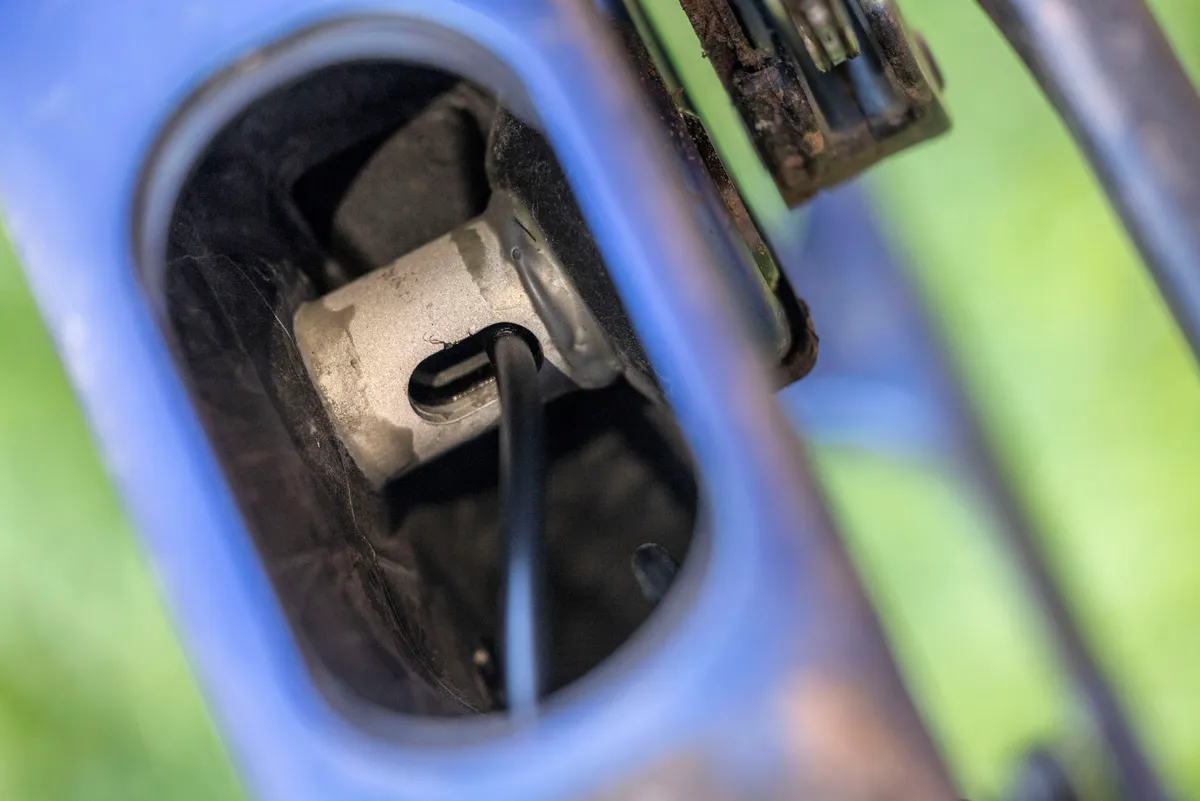
Pivot bolts are largely tightened by Torx 30 bolts, accessible from the non-driveside of the bike, to aid ease of maintenance. The rear axle lever can be popped out of the axle, revealing a combined 4mm, 6mm and T30 bit.
The rear pivots are protected by an integrated fender, while bolt holes on the seatstay bridge and inside the seatstays are there to accept a longer version of the fender, which should add splash protection for the rider too.
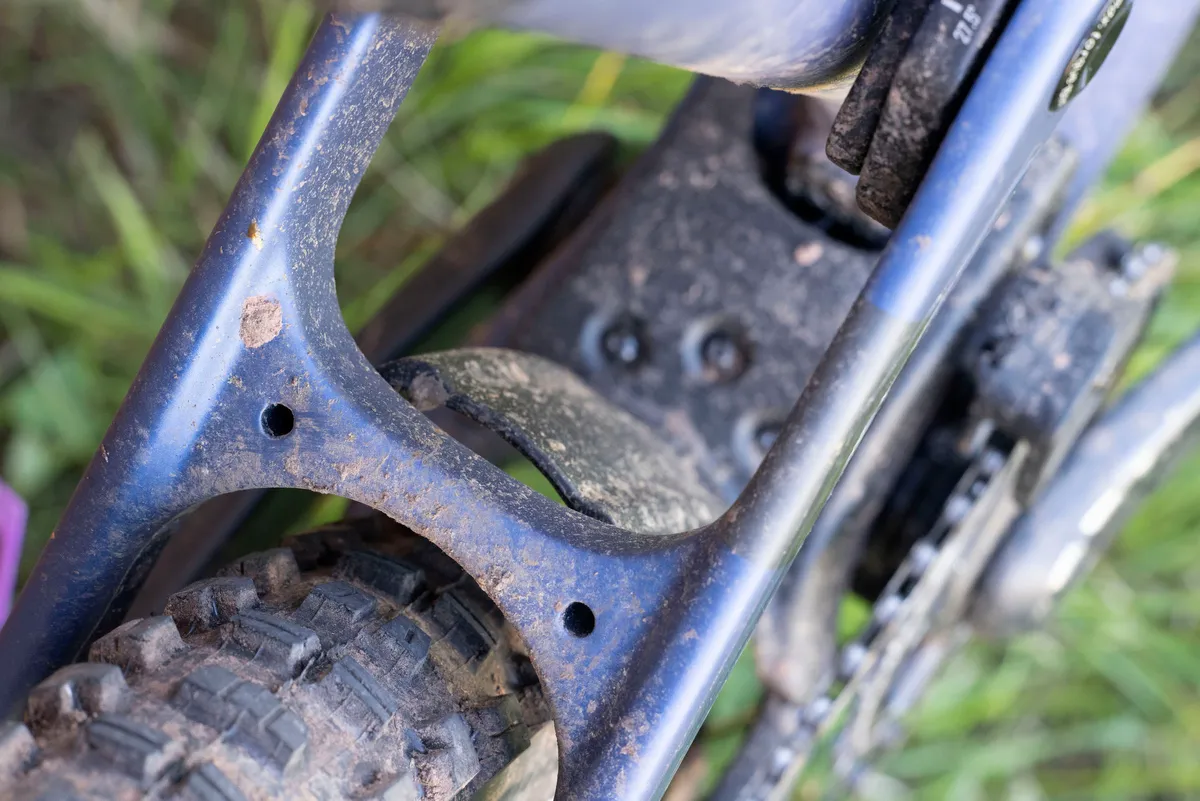
Chainslap protection and chain guides on all bikes offer security and silence on the trail. The down tube is also protected with rubber bumpers along most of its length.
Merida has built the frames to withstand Category 5 testing. This, basically, means prolonged bikepark use. Given the build kits on the One Sixty, Merida is offering a five-year warranty on the bigger bikes. The One Forty is given a lifetime warranty with the original owner.
Merida One Sixty and One Forty suspension details
Merida has used a flexstay design for the rear suspension, whereby the rear seat and chainstays have flex in-built, replacing a rear pivot. A rocker link drives a shock that sits under the top tube.
Doing so, according to Merida, improves stiffness and reliability, while reducing the amount of maintenance needed.
Merida says the system has been tweaked from that found on the Ninety-Six XC bike, to reduce the angular change between the stays, further reducing stresses and minimising the flex's impact on suspension feel.
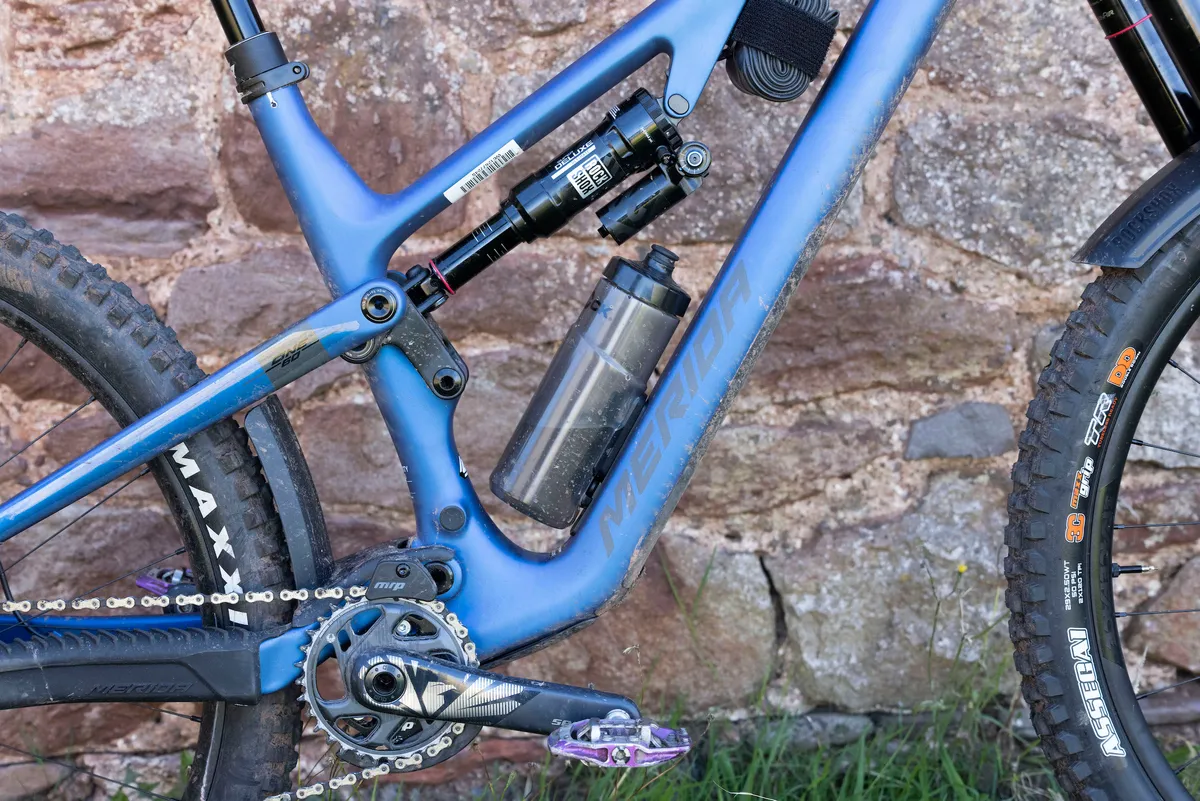
While carbon is well known for its ability to flex safely in this manner, Merida says the lower angular change also allows this design to be used safely and reliably with its alloy frames.
The kinematics of each size have been tuned for the projected rider weights and styles, while coil shocks can also be used on the bikes, if you wish.
On the One Sixty, Merida has increased the progression of the suspension kinematics to work better with large-volume air and coil shocks. Bigger frames also get more progression. This is because the average rider will be either heavier, or prone to riding more aggressively, and thus increased bottom-out protection is needed.
Adding more progression on bigger bikes gives greater support at the end of their travel, or in more extreme situations.
On a size XS, the progression is around 6 per cent, while on the XL it's around 14 per cent.
Suspension anti-squat is set at around 105 per cent at sag, falling below 100 per cent near mid-way through the bike's travel. This, according to Merida, gives it a stable pedalling platform at or just below sag, before a more sensitive, and less feedback-giving mid-to-late stroke.
It's a similar story with anti-rise – the impact braking has on the suspension. In the early-mid part of the stroke, such as on steep or fast flow trails, there's a little anti-rise, helping keep the bike level under braking. However, deeper into the stroke, the anti-rise drops off, boosting traction and suspension suppleness.
Merida One Sixty and One Forty geometry details
Merida may have had a reputation for slightly conservative geometries, but this goes out of the window with the new One Sixty and One Forty, with thoroughly progressive shapes used on both bikes.
The brand wanted no compromise on fit, and so has built its geometry around short seat tubes, low stack heights and longer reaches.
The idea is that riders with shorter legs can pick between 'normal'-sized frames and those a little longer, without suffering from a too-high front end. Taller riders benefit from long reaches and a long dropper post, while spacers and higher-rise bars can be used to compensate for a lower front end.
Extra-short and Short bikes get an 18mm-rise bar, while Medium, Long and Extra-long get a 30mm-rise bar.

This concept is called the 'Agilometer' sizing system. Riders towards the middle of the height bell-curve can pick from three sizes: smaller, more agile-shaped bikes, a 'normal'-size bike, or a very stable longer bike.
Key to all this is Merida's own Team TR dropper post. It's adjustable in drop, from 30mm to 230mm, meaning most riders should be able to have the post dropped as low into the frame as possible, enabling the most drop possible for their desired saddle height.
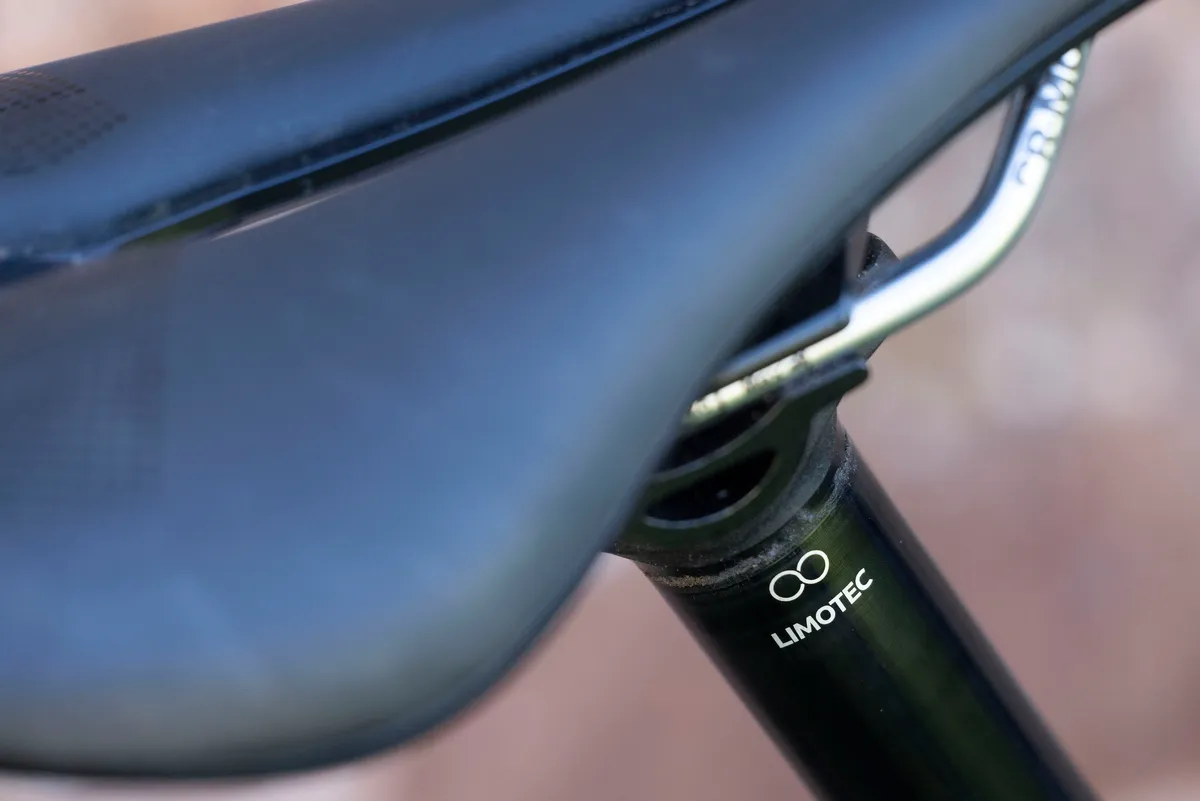
The dropper post used on the One Sixty has a zero-offset head, while the One Forty comes with a 10mm-offset head to maintain the desired geometry.
The flip chip in the suspension linkage, marked with 27.5in or 29in, is there mostly to give the same geometry between the mullet and full-29in bikes, rather than being a geometry adjust feature.
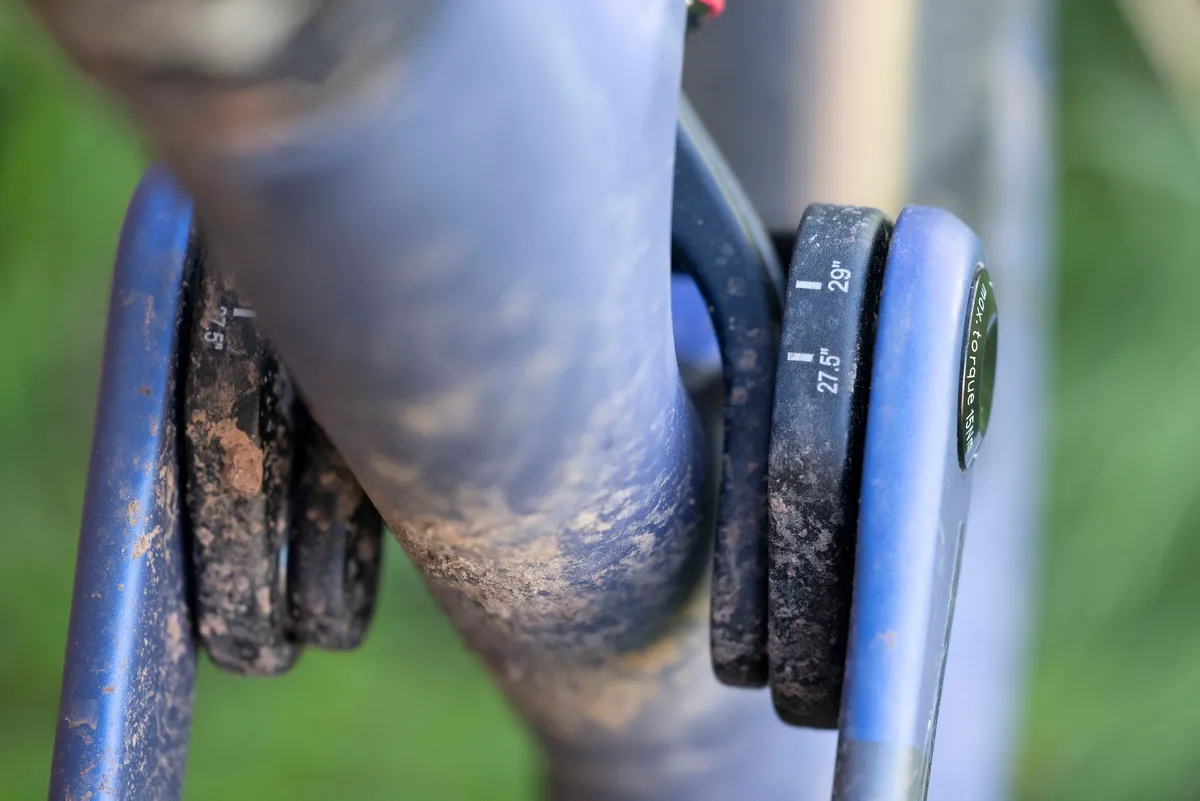
It can be used to change geometry, though you may run into tyre and crank clearance issues, as well as changing the desired ride characteristics of the bike.
Geometries for both bikes are displayed below.
| FS Frame Size | X Short | Short | Mid | Long | X Long |
|---|---|---|---|---|---|
| Tyre size (in) | 29/29 | 29/29 | 29/29 | 29/29 | 29/29 |
| Seat tube (mm) | 400 | 410 | 425 | 445 | 470 |
| Top tube (mm) | 532 | 559 | 586 | 618 | 649 |
| Chain stag length (mm) | 437.5 | 437.5 | 437.5 | 437.5 | 437.5 |
| Head tube angle (degrees) | 65 | 65 | 65 | 65 | 65 |
| Seat tube angle (degrees) | 80 | 80 | 80 | 80 | 80 |
| Bottom bracket drop (mm) | 35 | 35 | 35 | 35 | 35 |
| Head tube (mm) | 95 | 95 | 95 | 105 | 120 |
| Fork length (mm) | 557 | 557 | 557 | 557 | 557 |
| Reach (mm) | 426 | 453 | 480 | 509 | 535 |
| Stack (mm) | 607 | 607 | 607 | 616 | 629 |
| Wheelbase (mm) | 1,177 | 1,204 | 1,232 | 1,265 | 1,298 |
| Standover height (mm) | 722 | 725 | 732 | 731 | 771 |
| FS Frame Size | X Short | Short | Mid | Long | X Long |
|---|---|---|---|---|---|
| Tyre size (in) | 29/27.5 | 29/27.5 | 29/27.5 | 29/29 | 29/29 |
| Seat tube (mm) | 400 | 410 | 425 | 445 | 470 |
| Top tube (mm) | 535 | 562 | 589 | 621 | 653 |
| Chainstay length (mm) | 434 | 434 | 434 | 438 | 438 |
| Head tube angle (degrees) | 64 | 64 | 64 | 64 | 64 |
| Seat tube angle (degrees) | 79 | 79 | 79 | 79 | 79 |
| Bottom bracket drop (mm) | 7 | 7 | 7 | 27.5 | 27.5 |
| Head tube (mm) | 95 | 95 | 95 | 105 | 120 |
| Fork length (mm) | 581 | 581 | 581 | 581 | 581 |
| Reach (mm) | 415 | 442 | 470 | 498 | 525 |
| Stack (mm) | 615 | 615 | 615 | 625 | 638 |
| Wheelbase (mm) | 1,188 | 1,215 | 1,242 | 1,275 | 1,308 |
| Standover height (mm) | 727 | 730 | 737 | 736 | 776 |
Merida One Sixty and One Forty specification details
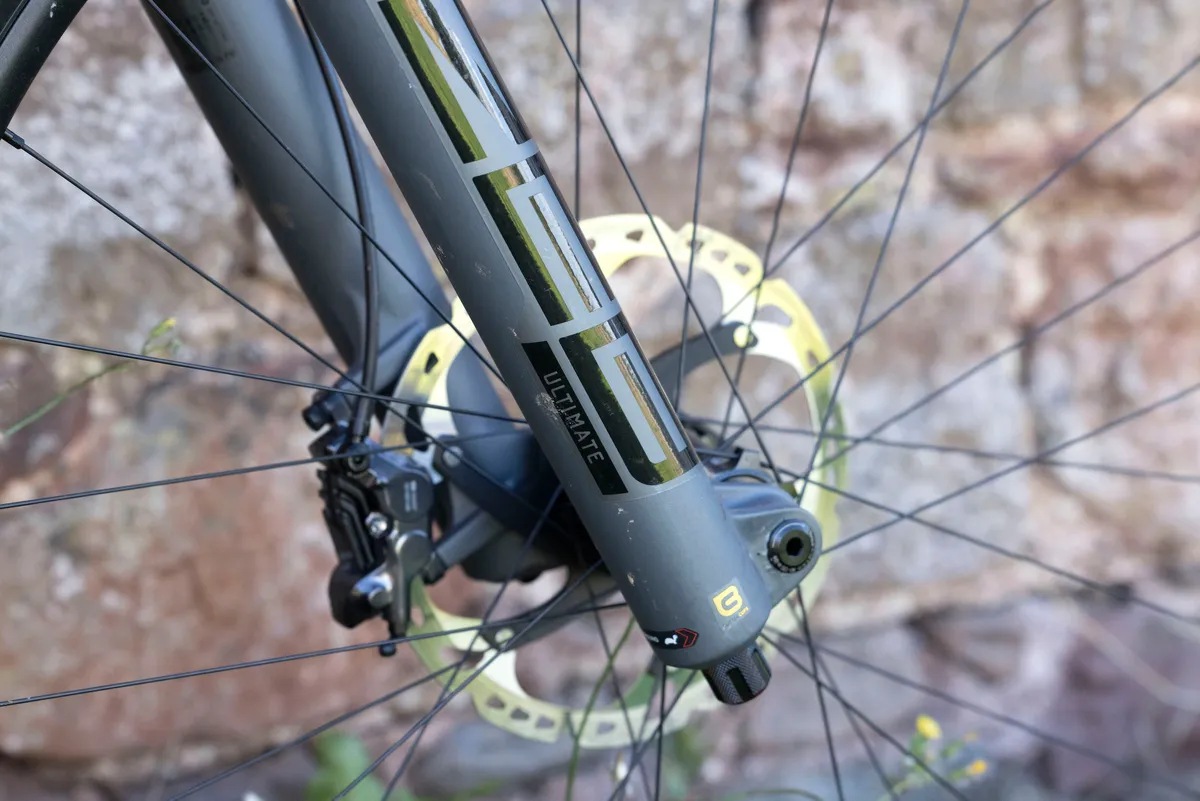
Because both bikes share frames, the bulk of the differences between the bikes come from the build kits.
As you'd imagine, the enduro-focused One Sixty comes with burlier, heavier kit, while the One Forty is lighter, with more trail and all-mountain orientated components.
The One Sixty comes with 38mm-stanchion forks from Fox and RockShox, with 170mm travel. They also come with piggy-back shocks, which have additional oil volume to better cope with heat build-up on long descents.
Conversely, the One Forty bikes has 35 or 36mm stanchion forks from the two brands, with 150mm travel, save for the entry-level bike, which gets a 140mm-travel fork. These bikes come with single-can air shocks, which are lighter in weight.
When it comes to rubber, the One Sixty receives DoubleDown carcass tyres from Maxxis – an Assegai at the front and a Minion DHRII at the rear. These are there to provide maximum grip, durability and damping at the expense of weight.

The One Forty models will get an EXO+ casing Dissector at the back, and an even lighter EXO casing Minion DHF at the front. Merida chose these tyres, it says, to save weight and improve rolling resistance.
Merida One Sixty and One Forty range and pricing details
Merida One Forty
There are six One Forty models on offer, from the entry-level One Forty 400 to the One Forty 10K.
The entry-level Merida One Forty 400 (£2,250 / €2,750) gets an SR Suntour XCR34 fork with 140mm of travel and a RockShox Deluxe Select+ shock. A Shimano Deore (with Race Face crank) drivetrain and 4-pot Tektro brakes also feature.
The Merida One Forty 700 (£3,100 / €3,860) is the top-level alloy bike, with Marzocchi Z1 forks, a Shimano SLX drivetrain and brakes, and the Maxxis tyres.
Go up a level and you get the Merida One Forty 6000 (£4,500 / €5,600), with a carbon frame and near-identical build kit to the One Forty 700.
At the top-end, the Merida One Forty 10K (£8,000 / €10,650) sees Factory-level Fox suspension, a SRAM X01 AXS drivetrain and Shimano XTR brakes.
Merida One Sixty
Five One Sixty models will be offered, from the alloy One Sixty 500 to the carbon One Sixty 10K.
The Merida One Sixty 500 (£2,750 / €3,350) comes equipped with a RockShox Yari, a Shimano Deore groupset and matching 4-pot brakes.
The Merida One Sixty 6000 (£4,600 / €5,760) is the cheapest carbon bike. It comes with a RockShox ZEB Select fork, SLX drivetrain and associated SLX brakes.
Rounding out the range is the One Sixty 10K (£9,000 / €11,900). This has Ultimate-level suspension – a ZEB and Super Deluxe, both featuring the electronically controlled Flight Attendant damping. A SRAM X01 drivetrain and Shimano XTR brakes provide the stop-and-go.
undefinedundefinedundefinedundefinedundefinedundefinedundefinedundefinedundefinedundefinedundefinedundefinedundefinedundefinedundefinedundefinedundefinedundefinedundefinedundefinedundefinedundefinedundefinedundefinedundefinedundefinedundefinedundefinedundefinedundefinedundefinedundefinedundefinedundefinedundefinedundefinedundefinedundefinedundefinedundefinedundefinedundefinedundefinedundefinedundefinedundefinedundefinedundefinedundefinedundefinedundefinedundefinedundefinedundefinedundefinedundefinedundefinedundefinedundefinedundefinedundefinedundefinedundefinedundefinedundefinedundefinedundefinedundefinedundefinedundefinedundefinedundefinedundefinedundefinedundefinedundefinedundefinedundefinedundefinedundefinedundefinedundefinedundefinedundefinedundefinedundefinedundefinedundefinedundefinedundefinedundefinedundefinedundefinedundefinedundefinedundefinedundefinedundefinedundefinedundefinedundefinedundefinedundefinedundefinedundefinedundefinedundefinedundefinedundefinedundefinedundefinedundefinedundefinedundefinedundefinedundefinedundefinedundefinedundefinedundefinedundefinedundefinedundefinedundefinedundefinedundefinedundefinedundefinedundefinedundefinedundefinedundefinedundefinedundefinedundefinedundefinedundefinedundefinedundefinedundefinedundefinedundefinedundefinedundefinedundefinedundefinedundefinedundefinedundefinedundefinedundefinedundefinedundefinedundefinedundefinedundefinedundefinedundefinedundefinedundefinedundefinedundefinedundefinedundefinedundefinedundefinedundefinedundefinedundefinedundefinedundefinedundefinedundefinedundefinedundefinedundefinedundefinedundefinedundefinedundefinedundefinedundefinedundefinedundefinedundefinedundefinedundefinedundefinedundefinedundefinedundefinedundefinedundefinedundefinedundefinedundefinedundefinedundefinedundefinedundefinedundefinedundefinedundefinedundefinedundefinedundefinedundefinedundefinedundefinedundefinedundefinedundefinedundefinedundefinedundefinedundefinedundefinedundefinedundefinedundefinedundefinedundefinedundefinedundefinedundefinedundefinedundefinedundefinedundefinedundefinedundefinedundefinedundefinedundefinedundefinedundefinedundefinedundefinedundefinedundefinedundefinedundefinedundefinedundefinedundefinedundefinedundefinedundefinedundefinedundefinedundefinedundefinedundefinedundefinedundefinedundefinedundefinedundefinedundefined